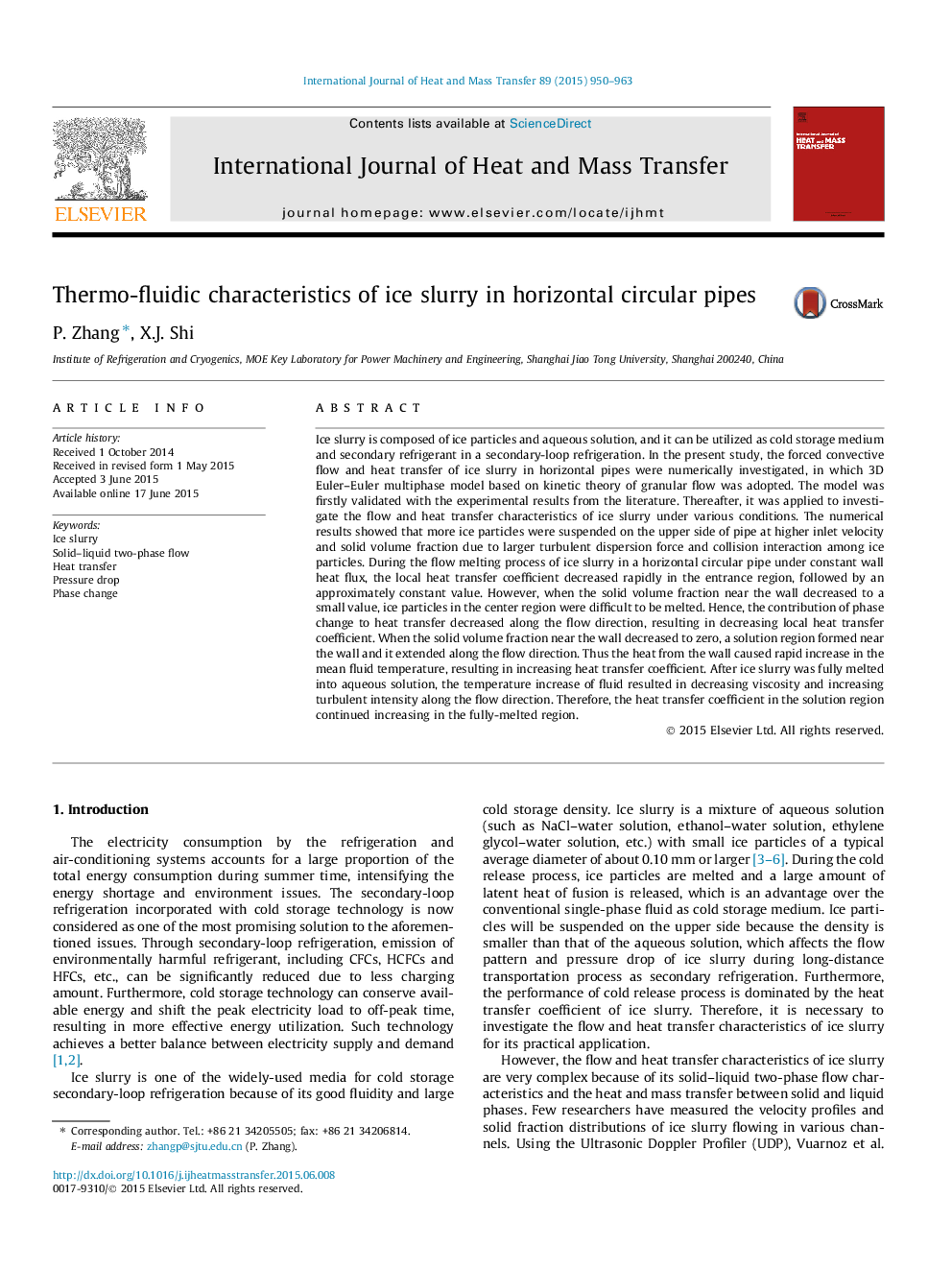| کد مقاله | کد نشریه | سال انتشار | مقاله انگلیسی | نسخه تمام متن |
|---|---|---|---|---|
| 7056628 | 1458053 | 2015 | 14 صفحه PDF | دانلود رایگان |
عنوان انگلیسی مقاله ISI
Thermo-fluidic characteristics of ice slurry in horizontal circular pipes
ترجمه فارسی عنوان
خصوصیات حرارتی مایع یخ در لوله های افقی دایره ای
دانلود مقاله + سفارش ترجمه
دانلود مقاله ISI انگلیسی
رایگان برای ایرانیان
کلمات کلیدی
دوغ یخ، جریان جامد مایع دو فاز، انتقال گرما، افت فشار، تغییر فاز،
موضوعات مرتبط
مهندسی و علوم پایه
مهندسی شیمی
جریان سیال و فرایندهای انتقال
چکیده انگلیسی
Ice slurry is composed of ice particles and aqueous solution, and it can be utilized as cold storage medium and secondary refrigerant in a secondary-loop refrigeration. In the present study, the forced convective flow and heat transfer of ice slurry in horizontal pipes were numerically investigated, in which 3D Euler-Euler multiphase model based on kinetic theory of granular flow was adopted. The model was firstly validated with the experimental results from the literature. Thereafter, it was applied to investigate the flow and heat transfer characteristics of ice slurry under various conditions. The numerical results showed that more ice particles were suspended on the upper side of pipe at higher inlet velocity and solid volume fraction due to larger turbulent dispersion force and collision interaction among ice particles. During the flow melting process of ice slurry in a horizontal circular pipe under constant wall heat flux, the local heat transfer coefficient decreased rapidly in the entrance region, followed by an approximately constant value. However, when the solid volume fraction near the wall decreased to a small value, ice particles in the center region were difficult to be melted. Hence, the contribution of phase change to heat transfer decreased along the flow direction, resulting in decreasing local heat transfer coefficient. When the solid volume fraction near the wall decreased to zero, a solution region formed near the wall and it extended along the flow direction. Thus the heat from the wall caused rapid increase in the mean fluid temperature, resulting in increasing heat transfer coefficient. After ice slurry was fully melted into aqueous solution, the temperature increase of fluid resulted in decreasing viscosity and increasing turbulent intensity along the flow direction. Therefore, the heat transfer coefficient in the solution region continued increasing in the fully-melted region.
ناشر
Database: Elsevier - ScienceDirect (ساینس دایرکت)
Journal: International Journal of Heat and Mass Transfer - Volume 89, October 2015, Pages 950-963
Journal: International Journal of Heat and Mass Transfer - Volume 89, October 2015, Pages 950-963
نویسندگان
P. Zhang, X.J. Shi,
